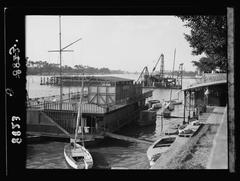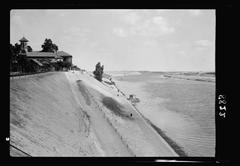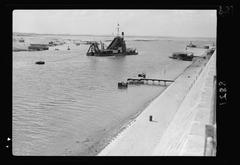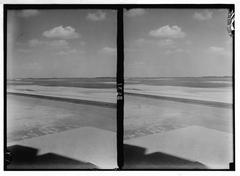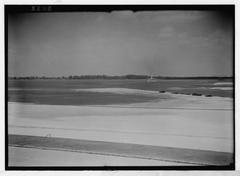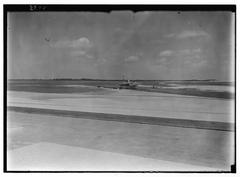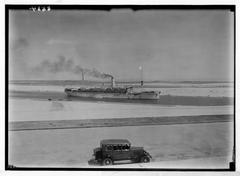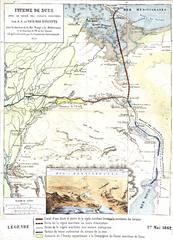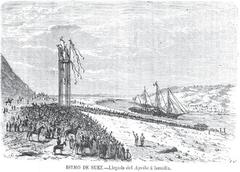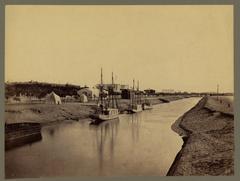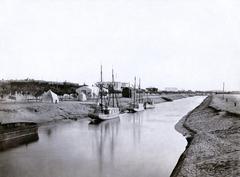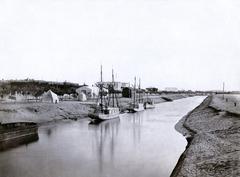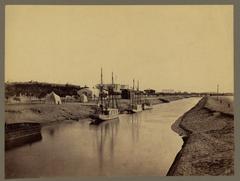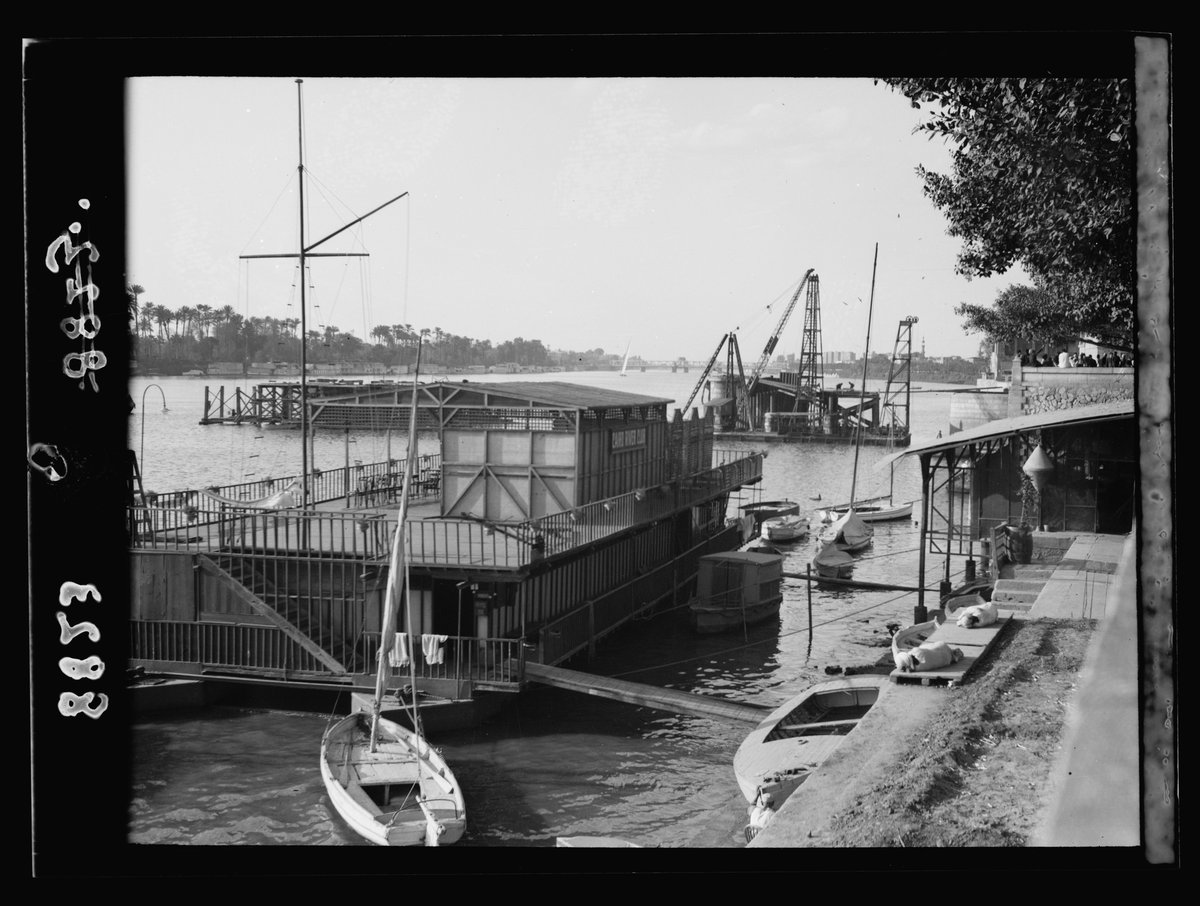
Ismailia Canal Visiting Hours, Tickets, and Travel Guide
Date: 14/06/2025
Introduction
Nestled along Egypt’s northeastern corridor, the Ismailia Canal and the city of Ismailia form a remarkable intersection of engineering achievement, historical depth, and cultural vibrancy. Originally constructed in the mid-19th century to supply fresh Nile water to the Suez Isthmus, the Ismailia (or Sweet Water) Canal was pivotal to the successful completion of the Suez Canal itself. Today, the canal and its city offer an enticing destination for travelers and history enthusiasts, where colonial architecture, scenic promenades, and a cosmopolitan heritage await exploration.
This comprehensive guide details Ismailia Canal’s historical significance, key attractions, practical visitor information—including visiting hours, ticketing, and accessibility—plus expert travel tips and insights into its enduring cultural legacy. For authoritative updates and planning resources, consult the Suez Canal Authority website and the Ismailia Tourism Portal, as well as local guides like HikersBay and nasseryouthmovement.net.
Table of Contents
- Introduction
- Historical Background: Origins & Construction
- Ismailia City: Development & Urban Identity
- Strategic Importance & Key Events
- Cultural & Religious Landmarks
- Visiting Ismailia Canal: Hours, Tickets & Accessibility
- Nearby Attractions & Activities
- Practical Visitor Tips & Local Customs
- Frequently Asked Questions (FAQ)
- Conclusion & Visitor Resources
- Sources
Historical Background: Origins & Construction
The Ismailia Canal—known as the Sweet Water Canal—was initiated in 1861 under the direction of French engineer Ferdinand de Lesseps and completed in 1863. Stretching 129 kilometers from Cairo to Ismailia and Suez, its primary purpose was to transport fresh Nile water to the arid Suez Isthmus, thereby enabling the construction and operation of the Suez Canal (HikersBay). The canal’s construction mobilized tens of thousands of Egyptian workers, highlighting both the engineering challenges and the complex socio-political dynamics of 19th-century Egypt.
Ismailia City: Development & Urban Identity
Founded in 1863 and named after Khedive Ismail Pasha, Ismailia was master-planned as an administrative and residential hub for the Suez Canal workforce. The city’s European-inspired boulevards, gardens, and colonial buildings reflect its cosmopolitan origins (nasseryouthmovement.net). Early residents included Egyptian canal workers and foreign engineers, creating a vibrant blend of cultures and architectural styles that remains evident today.
Strategic Importance & Key Events
Ismailia’s position at the Suez Canal’s midpoint made it a focal point for trade, administration, and military strategy. During the British occupation (1882–1956), it served as a major garrison town. Notably, Ismailia played a central role in the Suez Crisis of 1956 and the War of Attrition, underscoring its importance in Egypt’s modern political narrative.
The canal provided a lifeline for regional development, enabling agriculture, industry, and the expansion of international shipping through the Suez Canal. Today, Ismailia is home to industrial and free zones, supporting sectors ranging from food processing to electronics (nasseryouthmovement.net).
Cultural & Religious Landmarks
Ismailia’s layered history is reflected in its religious and archaeological sites. Noteworthy landmarks include:
- Abbasid Mosque: One of Egypt’s oldest mosques, built by Khedive Abbas Helmi II, with distinctive Ottoman architecture.
- Roman Square and French Quarter: Showcasing cosmopolitan influences and colonial-era villas.
- Archaeological Sites: Such as Tel El Kabir and Hassan Dawoud Hill, revealing prehistoric and early dynastic tombs (nasseryouthmovement.net).
Visiting Ismailia Canal: Hours, Tickets & Accessibility
Visiting Hours & Ticket Information
- Ismailia Canal Promenades & Public Gardens: Open daily from 7:00 AM to 8:00 PM. Free entry.
- Ismailia Museum: Open 9:00 AM to 5:00 PM. Tickets ~30–50 EGP, with discounts for students and children (Egyptian Gazette).
- Maison Maxim de Lesseps Museum: Sunday to Thursday, 9:00 AM–5:00 PM. Entry ~50 EGP.
- Suez Canal Authority Exhibition: Weekdays, 9:00 AM–3:00 PM. Free admission.
Check official sources or contact local visitor centers for updates, especially during public holidays or special events.
Accessibility
Major museums and public areas offer ramps and some accessibility features. Note that older colonial buildings and certain archaeological sites may have limited access.
Nearby Attractions & Activities
- Lake Timsah: Ideal for boating, kayaking, and lakeside dining.
- Ismailia Corniche: A scenic waterfront promenade with cafes and shops.
- Historic Neighborhood Walks: Explore colonial villas, Roman Square, and the French Quarter.
- Museums: Ismailia Museum and Suez Canal Museum for historical context (Trip101).
- Parks & Gardens: Almalahaa and Nemra 6 Parks for relaxation and family outings.
Practical Visitor Tips & Local Customs
- Best Visiting Period: October to April, when weather is mild.
- Getting There: Ismailia is 1.5–2 hours from Cairo by road or rail.
- Transport: The canal area is pedestrian-friendly; taxis and ride-hailing services are available.
- Safety: The city is generally safe; avoid isolated areas after dark.
- Dress Code: Modest attire is appreciated, especially in religious or local neighborhoods.
- Language: Arabic is official, but English is widely spoken in tourist areas.
- Dining: Enjoy fresh seafood and local specialties at canal-side restaurants.
Frequently Asked Questions (FAQ)
Q: What are the Ismailia Canal visiting hours?
A: Promenades and parks are open from 7:00 AM to 8:00 PM. Museums operate 9:00 AM to 5:00 PM.
Q: Are there entry fees for the canal or museums?
A: Canal walks and parks are free; museums charge 20–50 EGP.
Q: Are guided tours available?
A: Yes, through local agencies and visitor centers.
Q: Is the canal area accessible for wheelchairs?
A: Public parks and major museums offer some accessibility, though not all areas are fully equipped.
Q: When is the best time to visit?
A: October–April for pleasant weather and outdoor activities.
Conclusion & Visitor Resources
The Ismailia Canal and its city offer an immersive experience in Egypt’s modern history, engineering marvels, and vibrant cultural life. From picturesque canal promenades and colonial neighborhoods to rich museums and lively festivals, Ismailia welcomes travelers with warm hospitality and fascinating stories. For up-to-date details on visiting hours, tickets, and events, consult the Ismailia Governorate Tourism Page and the Suez Canal Authority website.
Enhance your journey with the Audiala app for tailored travel tips, self-guided tours, and exclusive offers. For deeper insights into Egyptian culture and travel, browse our related articles and follow us on social media.
Sources
- HikersBay: Ismailia Tourist Information
- nasseryouthmovement.net: The City of Ismailia, Also Known as Little Paris
- Egyptian Gazette: Ismailia—Beautiful Suez Canal Spot Rarely Visited by Tourists
- Trip101: Things to Do in Ismailia, Egypt
- travel2egypt.org: Best Times to Visit Ismailia
- ootlah.com: Ismailia Governorate Tourism
Alt tags optimized for “Ismailia Canal visiting hours”, “Ismailia historical sites”, and “Ismailia Canal tickets”.
For further planning, always verify current details via official websites and trusted travel resources.
